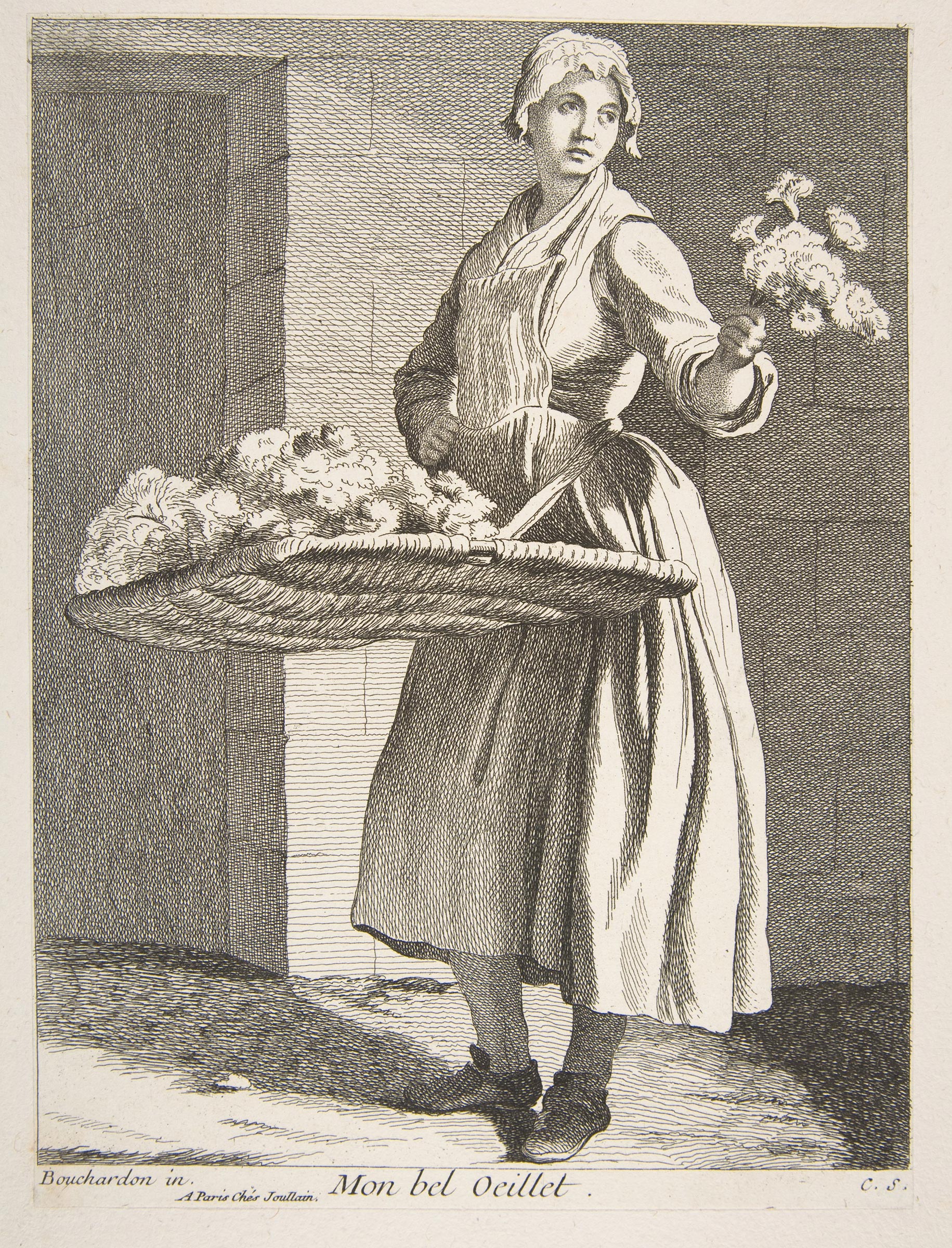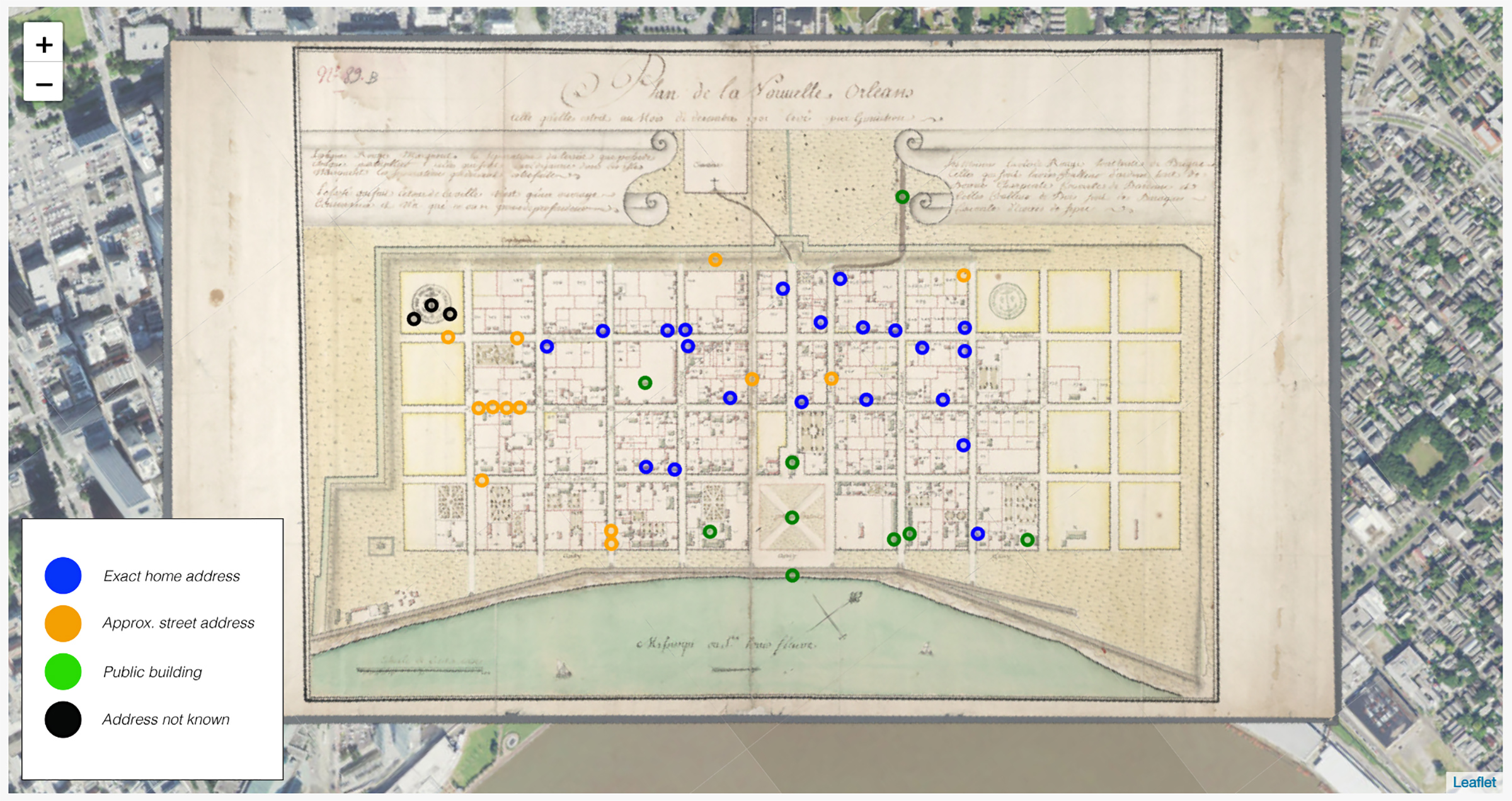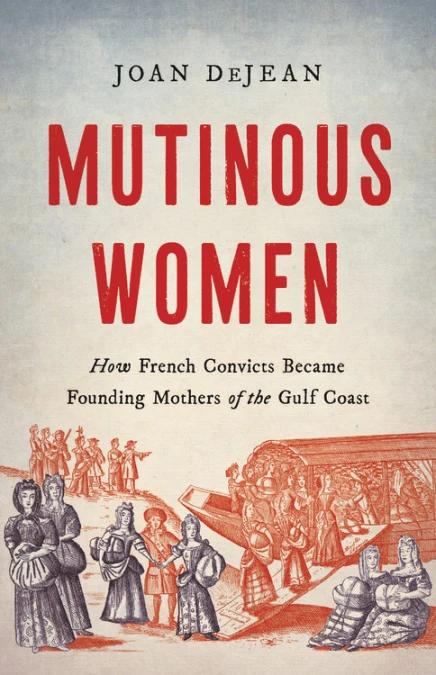
On Dec. 12, 1719, a ship named “La Mutine,” the Mutinous Woman, left the French port of Le Havre. The frigate was bound for the vast territory in what is now the United States that the French called “Louisiana” in honor of King Louis XIV. The vessel transported only female passengers, all of them convicts taken from one of Paris’s most notorious prisons. Most of the 96 women on board had been labeled “prostitutes,” as if they had been legally convicted of engaging in the exchange of sexual acts for money. But the reality behind the Mutinous Women’s lives in France is far more complicated.
Many of the prisoners had been arrested only months before departure, when corrupt officers of the Parisian police were rounding up women specifically to be shipped off across the Atlantic. Authorities had suddenly become aware of a critical lack of Frenchwomen in a colony that Indies Company officials hoped to develop quickly and turn into a major producer of tobacco, thus allowing France to rival English colonies along the Chesapeake. Any woman out and about in the streets of Paris was in danger of being arrested on trumped-up charges.
Among them was Manon Fontaine, a 19-year-old illiterate Parisian street vendor, who was walking the cobblestones of her native city all day long selling day-old fruit from a basket strapped around her waist, when she was arrested and charged with murder. Even though Manon had been elsewhere at the time of the crime and could prove it; even though, under questioning, the alleged witnesses who had testified against her all admitted that they had never seen her before, Manon Fontaine spent 19 years behind bars—until she was transported to Louisiana.
The women who survived the crossing were dropped off first on an island off the coast of what is now Alabama, then on a beach in what is now Mississippi. Mutinous Women soon made their way to nearby French outposts such as Mobile, and to places as distant as Illinois and Arkansas. They helped found French posts in spots up and down the Mississippi, from Natchez to the Gulf Coast. And when Louisiana was given a new capital, Mutinous Women—Manon Fontaine foremost among them— were among the founding inhabitants of the city named “New Orleans.”
Get your history fix in one place: sign up for the weekly TIME History newsletter
New Orleans’s founding is usually dated 1718. In February of that year, the colony’s governor, Bienville, selected a site for a future capital, as yet unnamed, and assigned some 50 men to clear land. They accomplished almost nothing.
It was only in 1721 that Louis Pierre Le Blond de La Tour began the actual planning of New Orleans. To help design the capital he chose his student, Charles Franquet de Chaville, as well as Adrien de Pauger. With a handful of workers, Pauger began clearing enough space so that street layout could begin. And the work was no simple matter since there were huge cypress trees to be uprooted and felled and thick masses of cane and river reeds to be hacked away. With Le Blond de La Tour’s consent, Pauger next set about “assigning lots along these streets to residents.” A few spaces were earmarked for public edifices, but otherwise land was virtually up for grabs. Pauger drafted an informal map of projected streets, using letters to reserve spots for specific individuals. With this understanding, New Orleans’s original inhabitants then pitched in. They cleared their own land and did their own construction. They even, as Pauger admitted, helped fell trees “to build this city.”
During the crucial first years of the city’s existence, at least 36 Mutinous Women resided there. Because of them, from the start diverse customs and experiences from the four corners of France were woven into the urban fabric of the new capital.
Manon Fontaine and other survivors who outlasted the early days of the place destined to become New Orleans lived on land they had cleared themselves, in homes of their own construction. In Paris, most of the women had been no strangers to hard labor. Laundresses lugged hefty parcels through the city and then pounded clothes clean. Street vendors like Manon Fontaine walked the alleys and the boulevards of Paris all day long with heavy loads attached to their bodies. In New Orleans, these women were fully able to work alongside their husbands. Manon and two other survivors married blacksmiths, and those farriers’ hands, hands strong enough to pound metal for hours on end, proved essential to carving homes out of canebrake. When the nowhere of New Orleans became somewhere, Manon and other founding inhabitants were part and parcel of the city’s first built environment, with the mud from which New Orleans was shaped embedded under their fingernails.

In December 1731, an architect’s draftsman named Gonichon created a map considered the most accurate representation of New Orleans a decade after the engineer Pauger began clearing brush to build a capital. On Gonichon’s map, lots were numbered, and an accompanying chart listed their owners. In many cases, the map and the chart combined make it possible to determine precisely who lived where. In 1731, colonial administrators continued to deplore the destabilizing effects on the colony of the Mutinous Women and were still considering shipping them off to a far-flung outpost for the well-being of New Orleans. The map reveals the reality behind such fantasies. Even though, by then, a number of survivors had been obliged to sell their original allotments and others had arrived too late to be granted land, the map demonstrates how solidly implanted numerous survivors had become.
There, right on the quay on lot 36, were ship’s Captain Joseph Lazou and Marie Louise Balivet, passenger number 178. Indies Company official Laurent Bordelon and Anne Françoise Rolland lived on lot 53 on Chartres Street. (Nearby number 55 was lost to master tailor Jean Cariton and Marie Anne Dinan in a crisis of debt.) Françoise Dinan’s widower occupied their home, lot 168 on Royal Street, while two blocks away on lot 47 at the corner of Royal and Orleans, Marie Louise Brunet lived with her husband, joiner Jean Baptiste Montard, and their first child. The eastern end of Bourbon Street was jam-packed with survivors: Manon Fontaine, on lot 230; Marie Angélique Dimanche, on lot 218 at the corner of St. Ann; Marie Daudin, on lot 173; Jeanne Coroy, on lot 171—just across the street from lot 246, the home Marie Daudin’s daughter would later acquire.
Read more: Women in Colonial America Were More Powerful Than We Give Them Credit For
Properties, including those of widows, were listed in the husband’s name. Two lots—226 on Orléans Street, 241 on St. Ann—were in the name of Manon Fontaine’s husband, the blacksmith known as “Bourguignon.” In all, of the roughly two hundred privately owned properties in the city, 8-10% were in the hands of women banished from France and still officially pronounced undesirable in their new homeland.
Only one married woman was acknowledged as a property owner in her own right: lot 230 on Bourbon Street had been granted “to the woman named Bourguignon.” That acknowledgment could be seen as an implicit recognition of one key facet of the identity that New Orleans acquired in its first decade. It became the only settlement in Louisiana where deported women were able to exert true power and influence.
The Mutinous Women made the city theirs in various ways—by working alongside men to shape it, by acquiring so much of the new urban space. Rather than passively accepting their fates and the definitions imposed on them by men in positions of authority, they attempted to redirect their lives—and even to take political action. In how many places in the world would any of this have been possible in the 1720s? In Paris, it was only in 1789 that lowborn women so actively tried to shape the course of history, and even then, such interventions were all too rare.
New Orleans was the place where the Mutinous Women could reinvent themselves most strikingly. And so it is fitting that, even though some deported women had larger lots and others terrain on more prominent streets, none owned more pieces of New Orleans than Manon Fontaine—the illiterate street vendor become major property owner.

Adapted from Mutinous Women: How French Convicts Became Founding Mothers of the Gulf Coast by Joan DeJean. Copyright © 2022. Available from Basic Books, an imprint of Hachette Book Group, Inc.
More Must-Reads from TIME
- Where Trump 2.0 Will Differ From 1.0
- How Elon Musk Became a Kingmaker
- The Power—And Limits—of Peer Support
- The 100 Must-Read Books of 2024
- Column: If Optimism Feels Ridiculous Now, Try Hope
- The Future of Climate Action Is Trade Policy
- FX’s Say Nothing Is the Must-Watch Political Thriller of 2024
- Merle Bombardieri Is Helping People Make the Baby Decision
Contact us at letters@time.com